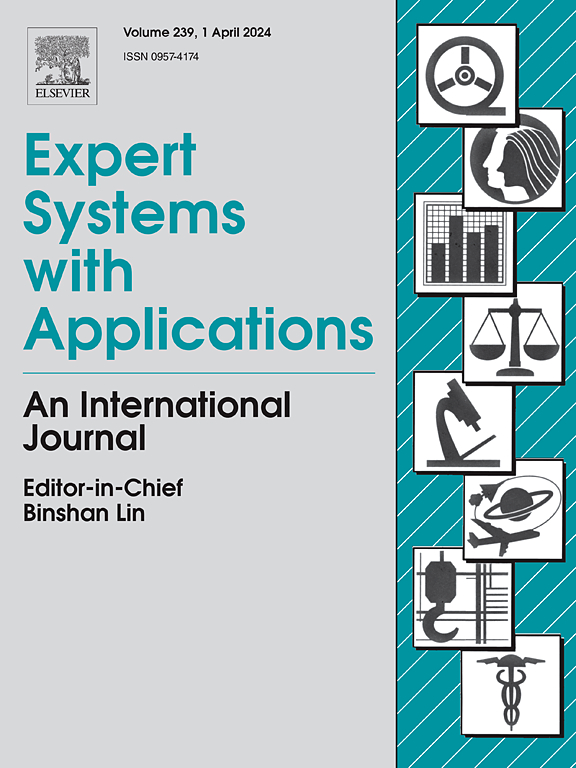smart + NIE IdeaGen:基于知识图的节点重要性估计,在大型语言模型上进行类比推理,用于创意生成
IF 7.5
1区 计算机科学
Q1 COMPUTER SCIENCE, ARTIFICIAL INTELLIGENCE
引用次数: 0
摘要
创意生成描述了一个创造性的过程,包括对一些知识进行推理,以获得新的信息。思维导图和头脑风暴等传统方法是有限的,往往由于缺乏高质量的想法和无效的方法而失败。大型语言模型(llm)的推理能力已经被研究用于构思任务,并报告了有趣的性能。然而,这些模型受到有限的逻辑推理能力的影响,这阻碍了在发现潜在洞察力和预测应用于思维时可能的结果时使用结构性和事实性的现实世界知识。此外,法学硕士反刍从数据集中学到的知识的可能性可能会对模型产生新颖想法的程度产生不利影响。本文采用两阶段逻辑推理方法,基于知识图(knowledge graphs, KGs)启动候选思想路径的搜索,以解决推理、领域特异性和新颖性问题。该推理探索的发散阶段利用KGs上的新节点重要性估计(NIE)技术来发现支持想法生成的潜在连接。在该推理的收敛阶段,采用类比推理的子图匹配(SMAR)来寻找匹配模式来描述新思想。使用smart + NIE和KGs有助于在将这种推理传递给llm以将想法翻译成自然语言之前实现对KGs的推理改进。为了评估创意的新颖性,提出了一种基于多前提蕴涵(multiple前提蕴涵,MPE)的关联-新颖性评分指标。我们将这个指标与其他流行的指标结合起来,评估SMAR + NIE在基准数据集上的表现,以及所产生想法的质量。研究结果表明,这种方法在创意生成任务中表现出与主流法学硕士的竞争表现。本文章由计算机程序翻译,如有差异,请以英文原文为准。
SMAR + NIE IdeaGen: A knowledge graph based node importance estimation with analogical reasoning on large language model for idea generation
Idea generation describes a creative process involving reasoning over some knowledge to derive new information. Traditional approaches such as mind-map and brainstorming are limited and often fail due to lack of quality ideas and ineffective methods. The reasoning capability of large language models (LLMs) have been investigated for ideation tasks and have reported interesting performance. However, these models suffer from limited logical reasoning capability which hinders the use of structural and factual real-world knowledge in discovery of latent insight and predict possible outcome when applied to ideation. In addition, the possibility of LLMs regurgitating knowledge learnt from datasets might adversely impact the degree of novel ideas the models can generate. In this paper, a two-stage logical reasoning approach is applied to initiate the search for candidate idea pathways based on the knowledge graphs (KGs) to address the problem of reasoning, domain-specificity and novelty. The divergence stage this reasoning explores utilizes a new node importance estimation (NIE) technique over KGs to discover latent connections supporting idea generation. In the convergence stage of this reasoning, subgraph matching using analogical reasoning (SMAR) is applied to find matching patterns to describe a new idea. The use of SMAR + NIE and KGs helps to achieve an improvement in reasoning over KGs before transferring such reasoning to LLMs for translation of idea into natural language. To evaluate the degree of novelty of ideas generated, a relevance-to-novelty scoring metrics is proposed based on multiple premise entailment (MPE). We combined this metric with other popular metrics to evaluate the performance of SMAR + NIE on benchmark datasets, and as well on the quality of ideas generated. Findings from the study showed that this approach demonstrates competitive performance with mainstream LLMs in idea generation tasks.
求助全文
通过发布文献求助,成功后即可免费获取论文全文。
去求助
来源期刊

Expert Systems with Applications
工程技术-工程:电子与电气
CiteScore
13.80
自引率
10.60%
发文量
2045
审稿时长
8.7 months
期刊介绍:
Expert Systems With Applications is an international journal dedicated to the exchange of information on expert and intelligent systems used globally in industry, government, and universities. The journal emphasizes original papers covering the design, development, testing, implementation, and management of these systems, offering practical guidelines. It spans various sectors such as finance, engineering, marketing, law, project management, information management, medicine, and more. The journal also welcomes papers on multi-agent systems, knowledge management, neural networks, knowledge discovery, data mining, and other related areas, excluding applications to military/defense systems.
 求助内容:
求助内容: 应助结果提醒方式:
应助结果提醒方式:


